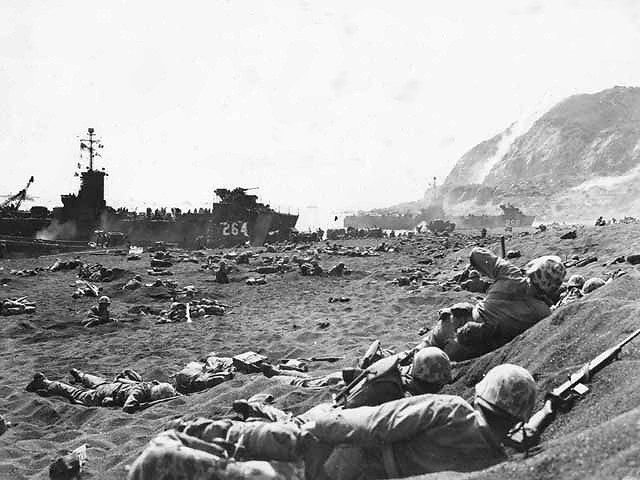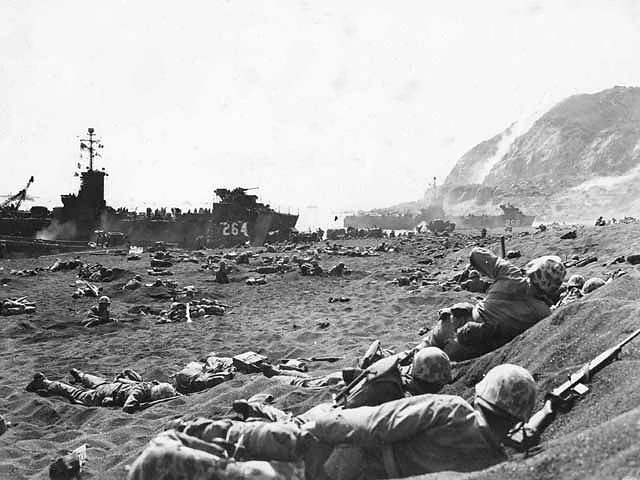
The Battle of Iwo Jima was one of the deadliest of World War Two. US Marines who landed on the shores of the island came face to face with entrenched Japanese fighters who were prepared to commit suicide rather than give up their island.
With some of the highest death and injury rates of the World War Two battles, US Marines received over a third of all Medal of Honor awards for World War Two overall. The medal was brought into commission by the US military in order to honor those soldiers who set themselves apart from their comrades for exceptional acts of bravery and gallantry on the battlefield.
Around 500 were issued for actions during World War Two and since then around 3500 have been awarded.
The US military knew that the battle on Iwo Jima would be deadly and the General leading the troops predicted that even as many as 15,000 troops could be killed or injured. In fact, around 25,000 ended up being killed or injured – a quarter of the 100,000 troops who descended on the island.
For the Japanese the death toll took around 20,000 lives with 1,000 of their remaining troops on the island taken as prisoners of war. Japanese troops were in fact some of the last Axis of Evil servicemen to surrender and two Japanese soldiers based on Iwo Jima were the last ever soldiers to surrender to Allied troops.
The Japanese knew that they would be overwhelmed by the US troops and so prepared for battle by digging hundreds of miles of tunnels and cave networks, the askmen reports.
One of the major factors which helped the US military to succeed was the help and support of Navajo Indian originating soldiers who were fighting with US troops. The Navajos were able to communicate top secret and important military instructions in Navajo code. While the Japanese had broken the code of other US military arms, including the air force code, they admitted that they had never been able to succeed in breaking the code of the Navajo Indians. It is thought that this was crucial in delivering instructions and directions during the attack, which the Japanese had no way of knowing what the US was planning.
